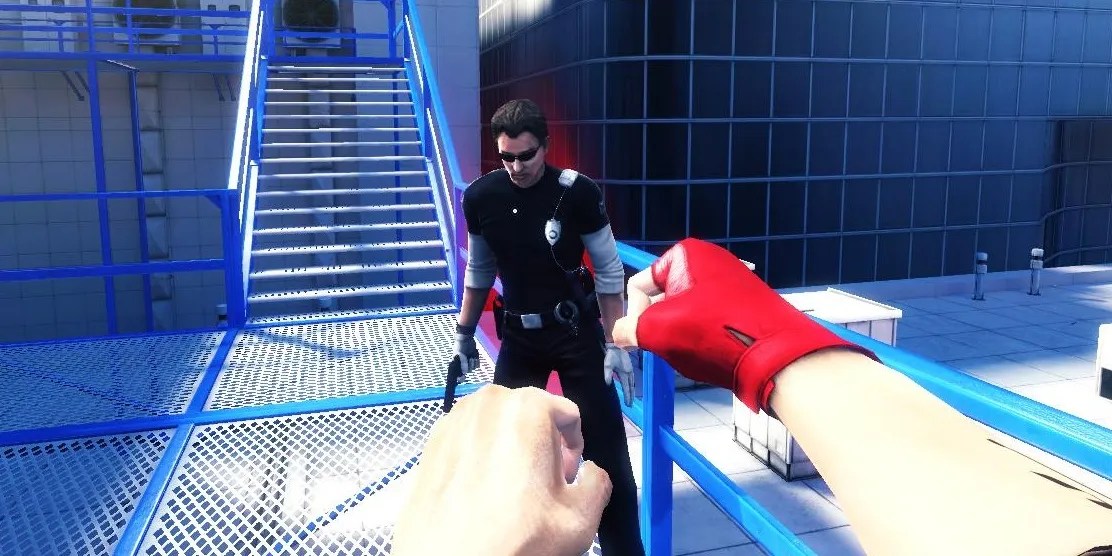Summary
The best video games take big swings. Even if that swing hits the ball out of the park, sometimes few people are there to witness it or sing its praises. This is the case with the first-person shooters listed below. They all did things that would not become standard in the genre for years. In some cases, the mechanics have yet to be replicated.
It is unfortunate to see these games not get the appreciation they deserve, but hopefully, players will come back to some of these after reading this list. Even if they do not, they should at least understand what these games were trying to do.

The whole draw ofTimeShiftis the suit the main character wears thatlets him manipulate time.He can slow down, reverse, and freeze the world around him. This led to various fun gameplay tricks, such as freezing time, unloading a clip into a single enemy, and then watching the baddie fly back as all built-up momentum is released.
It did not receive the highest scores from critics despite the unique gameplay mostly because of its short runtime. Developer Saber Interactive is still around today with hits likeWorld War Z.

This little game from Dice had a unique look and even more standout gameplay. Players were focused on smoothly navigating environments in aparkour-based movement system all in first-person. The visual cues - paint to indicate climbable surfaces - were a unique way of letting players know where they could and could not traverse while having no HUD to speak of.
Critics were harsh towards the short run time and relatively linear level design, but no one could deny the game’s unique vibe and mechanics. A sequel came out eight years later in 2016 which unfortunately did little to revive the series.

The first twoF.E.A.R.titles are notable for the ability to slow down time andthe incredible enemy AIthat makes each firefight feel unique.F.E.A.R. 3retains a lot of this but trades in the horror element for a bombastic cooperative shooter. This rubbed a lot of critics and fans the wrong way, but the game should be commended for utilizing an asymmetrical cooperative gameplay dynamic.
Cooperative campaigns were plentiful in this era, but both players generally had similar skills. InF.E.A.R 3, one player had the typical staple of slowing down time. The other could possess enemy characters and control them for a time, and manipulate the environment with telekinesis.

After the firstFar Crydeveloper Crytek went on to makeCrysis. Publisher Ubisoft had plans of their own for the series, however.Far Cry 2is hard to go back to after the refinements made inFar Cry 3based on the Ubisoft open-world formula, but its yearning for realism has to be respected, and one can see how it influenced future open-world FPS games.
Every mechanic the player engages with - the map, health, weapons, etc. - isgrounded in the world in some way.Healing has its own special animation, guns jam, and animals can be friends or foes within the environment.

When it comes to first-person shooters in theJames Bonduniverse,people generally look toGoldenEye 007as the shining example. One should not forgetQuantum of Solace,however. Sure it is short and the narrative jumps around in weird places to accommodate two movies worth of story into one campaign, but what is there is fun and engaging.
It featured a unique cover mechanic that zoomed out to a third-person perspective. It helped make players feel more like Bond. The multiplayer mode also deserves commendation for using theCall of Dutyformula but feeling unique thanks to the cover system.

Looking at reviews forAlien: Resurrectionis pretty funny now. A couple of them single out the odd control scheme. Turns out this way of controlling the camera and movement with the analog sticks would be standard on console FPS games onceHalorevolutionized the genre when the Xbox launched in 2001.
The PS1 did not come with a DualShock controller; it was introduced later in the console’s life. HadAlien: Resurrectionlaunched on the PS2 when the control scheme was becoming the norm, perhaps it would have faired a little better.

Nobody seems to talk aboutCold Winteranymore despite its unique story, hard-hitting gameplay, and visceral violence that sees players ripping enemies limb from limb as they mow them down with heavy weapons. One thing players rarely saw in a PS2 first-person shooter was the ability to move objects around or kick over tables, and then use this mechanic to hide oneself from enemy fire.
It is honestly shocking the game was not more popular for this fact alone. It was not the first game of the genre to have this level of interaction -Half-Life 2came out a year earlier on PC - but it felt unique for taking place in modern times with a more grounded narrative.